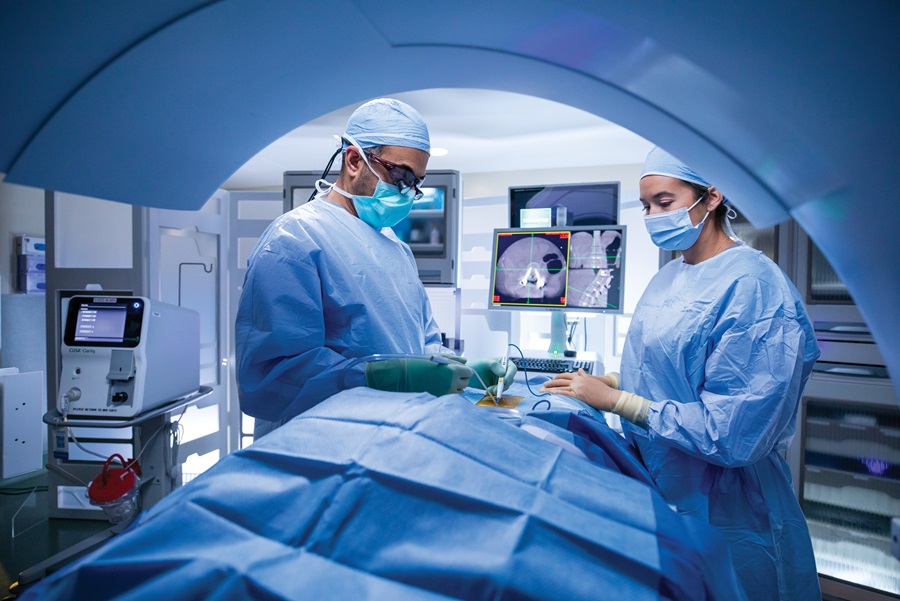A Summary of Back Conditions That Typically Cause Surgical Treatments
Spine problems such as herniated discs, back constriction, and degenerative disc disease often require surgical treatments when traditional therapies stop working to minimize persistent symptoms. Understanding the nuances of each problem and the equivalent medical alternatives, such as discectomy or spinal blend, is important for efficient monitoring.
Herniated Discs
Although many individuals with herniated discs might locate alleviation with traditional therapies, surgical treatment comes to be a required consideration when symptoms aggravate or continue - best spine surgeons in st louis mo. A herniated disc occurs when the soft inner gel of a spine disc extends through its outer layer, possibly leading and compressing neighboring nerves to pain, pins and needles, or weakness in the extremities
Traditional monitoring usually consists of physical therapy, discomfort medications, and corticosteroid injections, which aim to lower inflammation and improve feature. In situations where these techniques fall short to minimize debilitating symptoms, surgical choices might be checked out.
The most typical surgery for herniated discs is a discectomy, which entails the removal of the herniated section of the disc to alleviate pressure on the affected nerve root. In much more extreme instances, back blend might be required to support the influenced vertebrae.
Individuals are encouraged to review the prospective dangers and advantages of surgical treatment with their healthcare carrier to make an educated choice. Inevitably, the objective of any type of medical treatment is to recover function, reduce pain, and enhance general quality of life for people experiencing herniated discs.
Spinal Stenosis
Back constriction takes place when the spaces within the spinal column narrow, resulting in boosted pressure on the spine cable and nerves. This condition can establish in different areas of the spine, including the cervical and back locations, often because of age-related modifications, such as degenerative disc disease, joint inflammation, or thickening of tendons.
Individuals with back constriction might provide with symptoms that consist of pain, numbness, prickling, or weakness, mainly in the arms or legs. These signs and symptoms can be worsened by activities that include standing or walking, usually leading people to look for relief via conservative treatments like physical therapy, medications, or epidural steroid shots.
Nevertheless, when these non-surgical interventions fall short to give ample alleviation, surgical alternatives might be considered. Typical surgical treatments for spine stenosis include laminectomy, which entails the elimination of component of the vertebra to ease stress, and back blend, which supports the afflicted location. The decision to pursue surgery is usually based upon the severity of signs and symptoms, the level of functional impairment, and the overall wellness of the person. Prompt medical diagnosis and monitoring are critical to stop more neurological compromise and boost lifestyle.
Spondylolisthesis
Spondylolisthesis occurs when one vertebra slides onward over an additional, bring about misalignment of the back. This problem can result from different aspects, consisting of hereditary issues, trauma, or degenerative changes in the back. It is most typically observed in the back region, specifically at the L4-L5 and L5-S1 levels.

When non-surgical strategies stop working to eliminate signs or when considerable nerve compression is present, medical intervention may be warranted. Surgical alternatives can consist of spine fusion or decompression procedures, intended at restoring alignment and easing neurological symptoms.
Degenerative Disc Disease

The problem can be detected through a mix of professional examination, imaging researches, and client history. When these techniques fall short to supply adequate relief, surgical treatments might be thought about.
Surgical choices for DDD may consist of spinal blend or fabricated disc replacement, intended at supporting the influenced section and reducing pain (best spine surgeons in st louis mo). Ultimately, the option of treatment is embellished, considering the intensity of the condition, person health, and lifestyle variables
Back Lumps

What factors add to the growth of growths within the spinal column, and just how do they show up in patients? Spine growths can occur from various elements, including genetic proneness, environmental influences, and pre-existing clinical problems. They can be classified as main tumors, coming from the spine, or additional growths, which spread from other areas of the body. Clients might provide with a variety of signs, including local pain, neurological deficits, weak point, or modifications in digestive tract and bladder feature, depending upon webpage the growth's size and area.
Surgical intervention might be warranted to minimize symptoms, obtain a biopsy, go right here or eliminate the tumor completely. The goal of surgery is frequently to unwind neural components and stabilize the spine. Early discovery and treatment are critical for maximizing outcomes in individuals with back tumors.
Conclusion
In summary, back problems such as herniated discs, spinal stenosis, spondylolisthesis, degenerative disc condition, and spinal lumps often demand medical intervention due to their prospective to trigger substantial discomfort and practical impairment. While conservative therapies might offer momentary relief, medical choices end up being crucial when signs persist or worsen. Timely diagnosis and intervention play a crucial role in restoring feature and boosting the lifestyle for damaged people, emphasizing the relevance of comprehensive back care.
